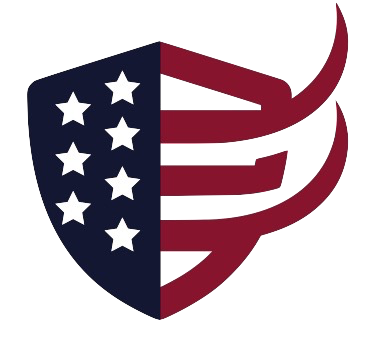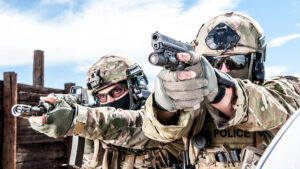Beyond the baton: 5 forgotten police weapons
Beyond the baton: 5 forgotten police weapons
Before guns, TASER weapons and pepper spray became standard issue to law enforcement personnel, police officers relied more heavily on close-combat weapons and tactics to subdue suspects. Let’s take a look at five old-school police weapons we don’t see around much anymore.
Leather slapper, sap, blackjack
The sap, slapper, or blackjack is a heavy leather pouch, eight to twelve inches long, filled with lead and sometimes a flexible steel rod. Unlike a baton, a sap’s size and shape allowed it to be concealed inside an officer’s pocket.
Saps may not look as intimidating as a gun or a baton, but thinking they’re not dangerous would be a mistake. A sap is dense enough to break bones when the user has room to swing, and the leather edge is rough enough to cause a dull, ripping laceration to the face when used as a jabbing instrument. Slappers would be ideal for use in ultra-tight quarters like a fight on the ground against a large suspect.
Slappers are a bit of a rarity these days, forbidden from carry or use by many jurisdictions across the country. Even so, some uniforms still come with a sap pocket.
Rapid Rotation Baton
Released in the mid-1990s, the Rapid Rotation Baton is a version of the side-handle baton that adds a spinning factor into the mix. When the long side of the baton is braced against an officer’s wrist, it may be used to shield them against incoming strikes. It seems like it could be useful in the right hands, but would also require a lot of training to use to the fullest.
Orcutt Police Nunchaku
The Orcutt Police Nunchaku (OPN) is the most popular kind of police nunchaku, and has found some use in some jurisdictions in Northern California and Colorado.
This set of nunchucks is not used exactly how you’d think. Though the OPN can be used as a striking weapon, it really shines as a grappling implement on the wrists and ankles for pain compliance. They turned out to be quite effective in this regard, but improper use has been associated with serious injuries like wrist and limb breaks. These were phased out of use in the LAPD after 30 individuals filed medical complaints against the city following an anti-abortion protest in 1991.
The Iron Claw
The Argus Iron Claw was a forceful come-along tool that gave the officer a large degree of control over the wrist of a suspect. If the suspect did not comply or was combative, breaking a wrist was a simple matter of applying leverage.
Though the first “mechanical nippers” surfaced in the late 1800s, versions of this device were used at least through the 1950’s.
Multi-tool clubs
Since early law enforcement professionals relied on their batons so often, there was actually a quite popular movement to outfit police batons with implements like whistles, torches/flashlights, and tear gas. At least four models were built with weapon-retention devices that would deploy “sharp spikes or blades” in case a suspect tried to grab an officer’s baton. The text even mentions two early 20th century patents for batons with guns built into the frame!
All of these implements seem like decent ideas on paper, but unfortunately, additional modifications added to the baton made it a poorer striking weapon that would sometimes break under stress.
Conclusion
It’s fascinating to look back on the unique and sometimes strange police weapons used before the development of today’s standard issue items like batons, pepper spray, and Tasers. While some of these vintage tools like the sap and nunchucks proved effective for a time, concerns over safety and proper training ultimately led to their decline. With the evolution of modern less-lethal weapons and tactics, today’s officers have access to more options than ever when facing resistance. But a look to the past reveals the creativity and innovation that went into equipping the police of earlier eras.
FAQs
What were some common vintage police weapons?
Some common vintage police weapons included leather saps, nunchucks, iron claws, and multi-tool batons with features like flashlights and tear gas.
Why did old weapons like saps and nunchucks fade from use?
Concerns around safety and improper use, as well as lawsuits over injuries, led many departments to phase out vintage weapons in favor of modern standard issue tools.
What are some advantages of current police weapons versus old ones?
Modern police weapons are better designed for safety and involve less risk of serious injury when used properly. Officers today also have more options to choose from.
Did vintage police weapons ever incorporate other tools?
Yes, some vintage batons incorporated whistles, lights, tear gas, and even gun barrels into their design. But these complicated weapons were prone to breaking.
What changed in policing that reduced need for vintage weapons?
Improved training, communication, and the development of sophisticated less-lethal weapons like Tasers reduced the need for vintage weapons in modern policing.



